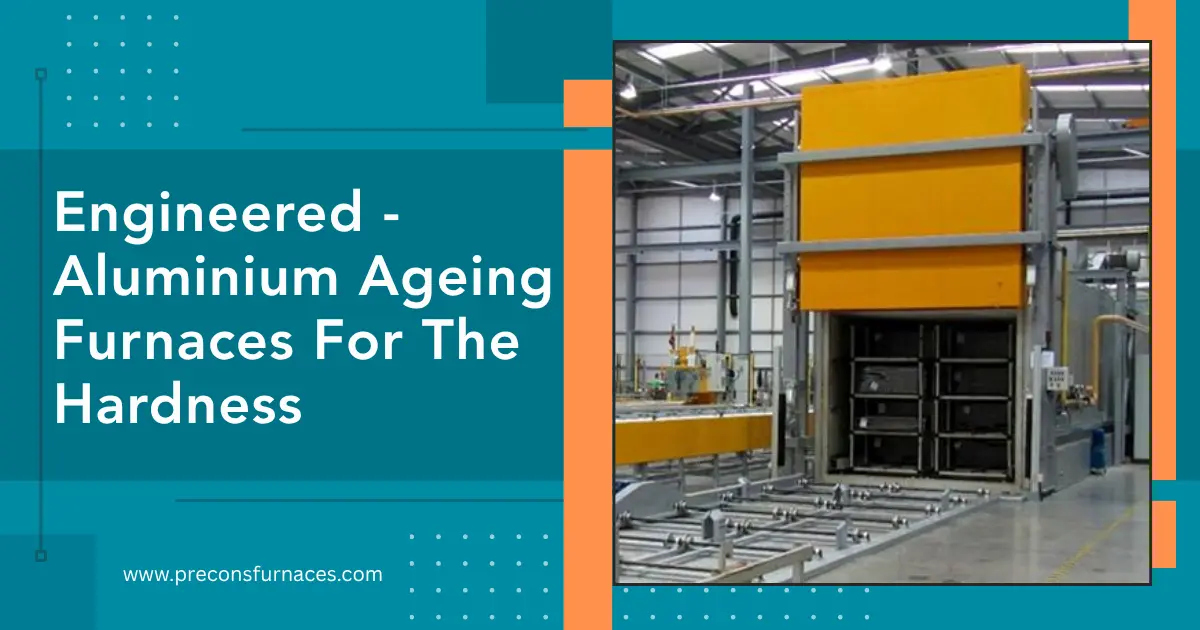
Aerospace engineers demand extraordinary strength-to-weight ratios from aluminium components. Automotive manufacturers require precise mechanical properties for safety-critical parts. The secret to unlocking aluminium’s full potential? Precipitation hardening through precisely controlled ageing processes that transform soft, freshly-quenched aluminium into high-strength structural components.
Yet achieving optimal precipitation hardening results remains one of the most challenging metallurgical processes in modern manufacturing. Temperature variations of just ±5°F can mean the difference between peak strength properties and underperforming components requiring costly rework or scrapping.
The Science of Precipitation Hardening
Precipitation hardening (also called age hardening) creates microscopic precipitate particles within the aluminium alloy’s crystal structure. These submicroscopic obstacles prevent dislocation movement, dramatically increasing the material’s strength and hardness.
The process requires three critical phases:
- Solution heat treatment – dissolving alloying elements at elevated temperatures
- Rapid quenching – creating a supersaturated solid solution
- Controlled ageing – precise temperature exposure promoting optimal precipitate formation
Critical Factor: The ageing phase determines final mechanical properties, making furnace performance absolutely crucial.
Temperature Precision: The Foundation of Success
Aluminium ageing furnaces must maintain extraordinary temperature uniformity and stability. Different aluminium alloys require specific ageing temperatures:
- 2000 series (copper alloys): 250-380°F ageing temperatures
- 6000 series (magnesium-silicon): 320-375°F optimal range
- 7000 series (zinc alloys): 250-350°F depending on desired properties
Temperature uniformity within ±3°F throughout the chamber ensures consistent precipitate formation across all components, regardless of position or mass.
Time-Temperature Profiles: Precision Choreography
Optimal precipitation occurs through carefully orchestrated heating cycles. Simple time-at-temperature approaches rarely achieve peak properties. Advanced ageing processes utilize:
Multi-Stage Ageing Cycles:
- Initial nucleation phase at lower temperatures
- Growth phase at peak ageing temperature
- Stabilization period preventing over-ageing
Real-World Impact: Properly executed multi-stage ageing can improve tensile strength by 15-25% compared to single-stage processes.
Atmosphere Control: Preventing Surface Degradation
While precipitation hardening occurs internally, surface quality has a significant impact on component performance. Advanced aluminium ageing furnaces incorporate:
- Controlled air circulation prevents hot spots and temperature stratification
- Low-oxygen atmospheres minimizing surface oxidation
- Humidity control prevents moisture-related defects
- Filtered air systems eliminate contaminant deposition
Aerospace Applications: Surface finish requirements for aircraft structural components demand exceptional atmosphere control throughout ageing cycles.
Airflow Engineering: Uniform Heat Distribution
Strategic airflow design separates high-performance ageing furnaces from conventional ovens. Key features include:
- Horizontal and vertical air circulation ensures three-dimensional temperature uniformity
- Variable-speed fans adapting to different component masses and geometries
- Deflector systems prevent direct impingement on sensitive components
- Recirculation optimization maximizing energy efficiency while maintaining uniformity
Advanced Control Systems: Repeatable Excellence
Modern aluminium ageing furnaces employ sophisticated control technologies:
Programmable Logic Controllers (PLCs):
- Store complex time-temperature profiles for different alloys
- Automatically adjust heating rates based on component thermal mass
- Monitor critical process parameters in real-time
- Generate certification-quality documentation for aerospace/automotive applications
Temperature Monitoring:
- Multiple thermocouples throughout the chamber volume
- Continuous verification of uniformity specifications
- Automatic alerts for deviations requiring intervention
Load Configuration: Maximizing Consistency
Component arrangement within ageing furnaces dramatically impacts results:
- Adequate spacing ensuring airflow circulation around all parts
- Similar mass grouping prevents thermal lag differences
- Rack design optimization promoting uniform heating patterns
- Loading density calculations, maintaining temperature uniformity specifications
Process Validation: Ensuring Peak Performance
High-performance applications require rigorous process validation:
- Temperature uniformity surveys documenting chamber performance
- Mechanical property testing, verifying hardness and strength achievements
- Metallurgical analysis confirming optimal precipitate structure
- Statistical process control ensuring batch-to-batch consistency
The Competitive Advantage
Manufacturers utilizing precision-engineered aluminium ageing furnaces achieve remarkable benefits: consistent mechanical properties meeting aerospace specifications, reduced scrap rates from improper ageing, certification-ready documentation, and faster time-to-market through reliable processing.
Ready to optimize your aluminium ageing processes for aerospace-grade results? Precons Furnaces engineers specialized in aluminium ageing furnaces, delivering the temperature precision and uniformity demanded by critical applications. Our systems have achieved certification for aerospace, defence, and high-performance automotive components worldwide.